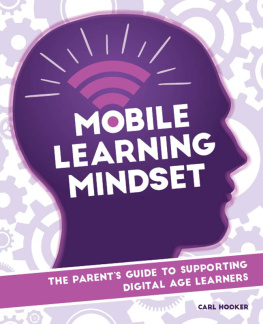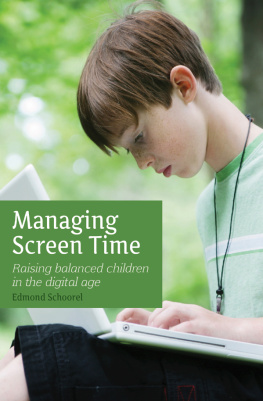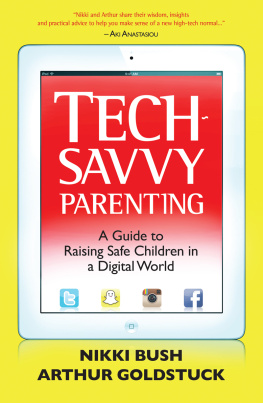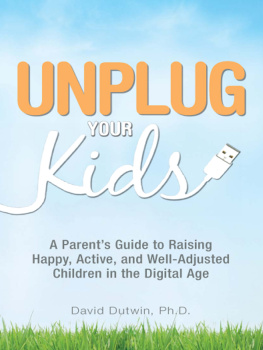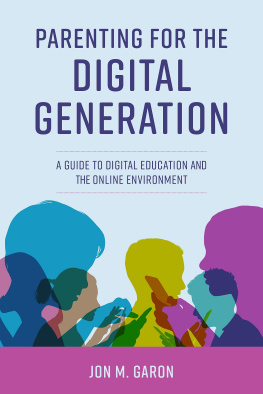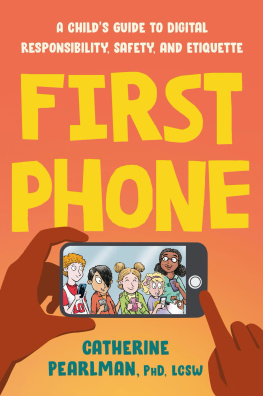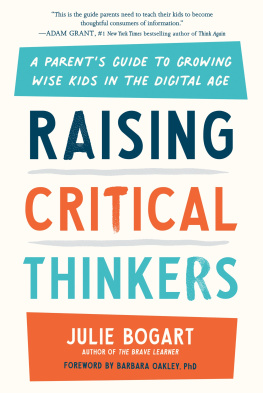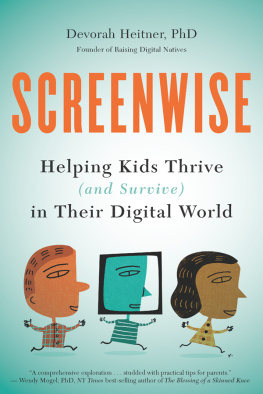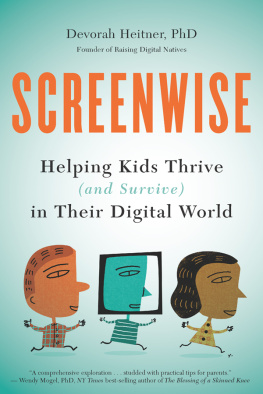Contents
Pagebreaks of the print version
Guide


Mobile Learning Mindset
The Parents Guide to Supporting Digital Age Learners
Carl Hooker
2017 International Society for Technology in Education
World rights reserved. No part of this book may be reproduced or transmitted in any form or by any meanselectronic, mechanical, photocopying, recording, or by any information storage or retrieval systemwithout prior written permission from the publisher. Contact Permissions Editor: ; fax: 1.541.302.3780.
Editor: Emily Reed
Copy Editor: Kristin Landon
Cover Design: Brianne Beigh
Book Design and Production: Kim McGovern
Library of Congress Cataloging-in-Publication Data
Names: Hooker, Carl, author.
Title: Mobile learning mindset : the parents guide to supporting digital age learners / Carl Hooker.
Description: Portland, Oregon : International Society for Technology in Education, [2017] | Includes bibliographical references.
Identifiers: LCCN 2017007015 (print) | LCCN 2016046976 (ebook) | ISBN 9781564843968 (pbk.) | ISBN 9781564846525 (mobi) | ISBN 9781564846532 (epub) | ISBN 9781564846549 (pdf)
Subjects: LCSH: Mobile communication systems in education. | EducationParent participation. | Home and school.
Classification: LCC LB1044.84 .H67 2017 (ebook) | LCC LB1044.84 (print) | DDC 371.33dc23
LC record available at https://lccn.loc.gov/2017007015
First Edition
ISBN: 978-1-56484-396-8
Ebook version available
Printed in the United States of America
ISTE is a registered trademark of the International Society for Technology in Education.
About ISTE
The International Society for Technology in Education (ISTE) is the premier nonprofit organization serving educators and education leaders committed to empowering connected learners in a connected world. ISTE serves more than 100,000 education stakeholders throughout the world.
ISTEs innovative offerings include the ISTE Conference & Expo, one of the biggest, most comprehensive ed tech events in the worldas well as the widely adopted ISTE Standards for learning, teaching and leading in the digital age and a robust suite of professional learning resources, including webinars, online courses, consulting services for schools and districts, books, and peer-reviewed journals and publications. Visit iste.org to learn more.
Also by Carl Hooker
Mobile Learning Mindset: The District Leaders Guide to Implementation
Mobile Learning Mindset: The Principals Guide to Implementation
Mobile Learning Mindset: The Coachs Guide to Implementation
Mobile Learning Mindset: The Teachers Guide to Implementation
Mobile Learning Mindset: The IT Professionals Guide to Implementation
To see all books available from ISTE, please visit iste.org/resources.
About the Author

Carl Hooker has been involved in education since graduating from the University of Texas in 1998. He has been in a variety of positions in both Austin Independent School District (ISD) and Eanes ISD, from first grade teacher to virtualization coordinator.
Hooker is now director of innovation and digital learning at Eanes ISD. He is also the founder of the learning festival iPadpalooza (http://ipadpalooza.com). As director, he uses his background in both education and technology to bring a unique vision to the district and its programs. During his tenure, Eanes has jumped into social media, adopted the Google Apps for Education, and started to build a paperless environment with Google Docs. Hooker helped spearhead the Learning and Engaging through Access and Personalization (LEAP) program, which put 1:1 iPads into the hands of all K12 students at Eanes.
Hooker has been a part of a strong educational shift toward technology integration. From his start as a teacher to his current district technology leadership role, he has always held one belief: Students need to drive their own learning. He realizes the challenges in our current public educational institutions and meets them head-on. His unique blend of educational background, technical expertise, and humor makes him a successful driving force for this change. Hooker also works as a keynote speaker and consultant through his company HookerTech, LLC.
Preface
In January 2010, Steve Jobs took the stage at a major Apple event to announce the creation of a device that was in between a laptop and a smartphone. When he announced the iPad, the reviews were mixed. Wasnt this something that had been tried before, even with Apples MessagePad? (http://en.wikipedia.org/wiki/MessagePad) How was this going to work in mainstream society when it was bigger and bulkier than a phone and didnt have the keyboard of a laptop?
At the time of the announcement, I was a virtualization coordinator for the district. The technology director (my boss at the time) looked at me with wonder when I showed my excitement over this announcement. This is going to change the face of education, I told him. His response: I bet they dont sell even a million of them. Its like a crappy version of a laptop, only you can only do one thing at a time on it. It doesnt even have a USB port!
In retrospect, I should have taken that bet, as Apple went on to sell a million in pre-orders alone. Flash forward a few more months. On April 2nd I was promoted to the role of Director of Instructional Technology. The very next day the first-generation iPad began to be sold in U.S. stores. I point this all out to show that even with all the prep work and sweat necessary for a successful device deployment, some synergy is also required.
As Director of Instructional Technology, I was taking over a dying role of sorts. Many districts were cutting the position at that time in Texas, and some felt it was a nice to have more than a need to have position. Knowing that going in, I made it one of my personal missions to erase the thought from the minds of the purse-string holders that my position could ever become obsolete. In fact, I set out to do the exact opposite: make them think they couldnt function successfully without it.
A big part of any leadership position is assessing risks. With the announcement of the iPad, my mind immediately went to education. How could these devices help students personalize their own learning? How would they enhance engagement and the learning experience of students? Are those gains in engagement and personalization enough to justify giving every student one of these devices?
These questions and many others went through my mind and those of many of the leaders in my district in the months that followed. Ultimately, in the fall of 2010, our district took the first steps toward providing 1:1 mobile devices. Whereas some districts chose to make big splashes with their first deployment, our initiative started with a forward-thinking librarian (Carolyn Foote) purchasing six first-generation iPads for students and teachers to check out.
Enter the second synergistic event. A group of leaders including myself made a trip to Cupertino, California, for an executive briefing on Apples ideas for iPads in education. Before lunch of the first day, the Westlake High School principal leaned over and said to us, We need one of these for every student. At that time, iPads were considered purely consumptive devicesa nice way to read a book or take notes, but nothing in the way of creativity. That trip to Apples headquarters changed all of that for those in the room, even those who had been skeptical.

